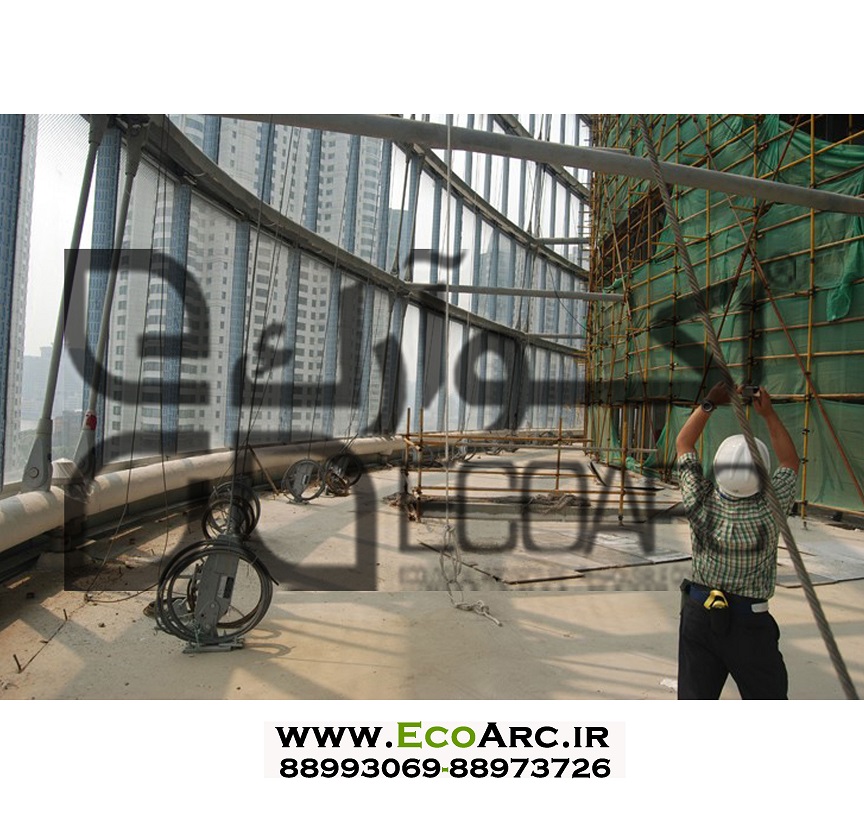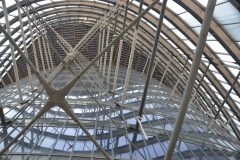Shanghai Tower curtain wall facade
The curtain wall is being installed on the Shanghai Tower, and so far I am very impressed with the way that fabrication and installation are progressing. The hard work of our project team, in particular Michael Peng and Ben Tranel, is the reason we have been able to streamline this complicated process. Ben and Michael have worked with Yuanda, the curtain wall contractor, to simplify the design and to ensure the integrity of construction.
From day one we knew that the curtain wall would be one of the building’s most challenging aspects from a design, engineering, and constructability perspective. It is difficult enough to design a double-skin building, but one that requires the outer skin to be constructed at continuously varying distances from the inner curtain wall has never been done before.
Allow me to get technical for a moment. The outer curtain wall is designated as “A,” while the inner curtain wall is “B.” The “B” wall is constructed against the concrete floor slabs, whereas “A” is constructed at points whose distance from “B” range from two feet to 33 feet.
As many of you know, the “A” curtain wall employs a system of suspended rods and girts and is hung from an outrigger truss structure above, and the tolerances of the underlying structural system are critical to an accurate installation of the façade. We are essentially hanging 14 floors of curtain wall on a series of ring beams braced back to the core.
This design is similar to a circular blade wheel formed from the core to the outside, if it is not so complicated that the outer wall can not be mounted. This means that there are no structural slabs, such that the pipes should be tightly shaped in the foreseeable points on the rim shaped beam beams. We are building an outer wall curtain on a series of suspended systems We are hanging in the atmosphere of the atrium double skin curtain wall facade. Establishing connecting points for the installation of the outer Curtain Wall to the nearest point in the interior structure, which is formed within the framework of a complex structural system that is inconsistent with the Cartesian coordinates, and it is not necessary to say that this is one of the main challenges of the project.
What surprises us in terms of construction is the gravity of the curtain Wall and the structural circular rims. When we load the Cretan Wall on the structure, it causes a structural deviation, and since all 14-year deviation builds up on the same ridge, the correct amount of deviation is a major challenge. Upon completion of the first floor, the beam is properly connected to the strucker, and structural beams on the ground along the vertical rings that provide structural control against lateral loads and static strength. In fact, this is a kind of second shell view, which is of Curtin-Wall type
My worry from the start of the project is the effect that light and landscape have on the tenants and residents of the building. There is always this potential in the frame of the certain Wall, the glass cover and the Curtain Wall system, which does not close the view, and now what happens to the Curtain Wall structure, when viewed from within the atrium The space goes out.

